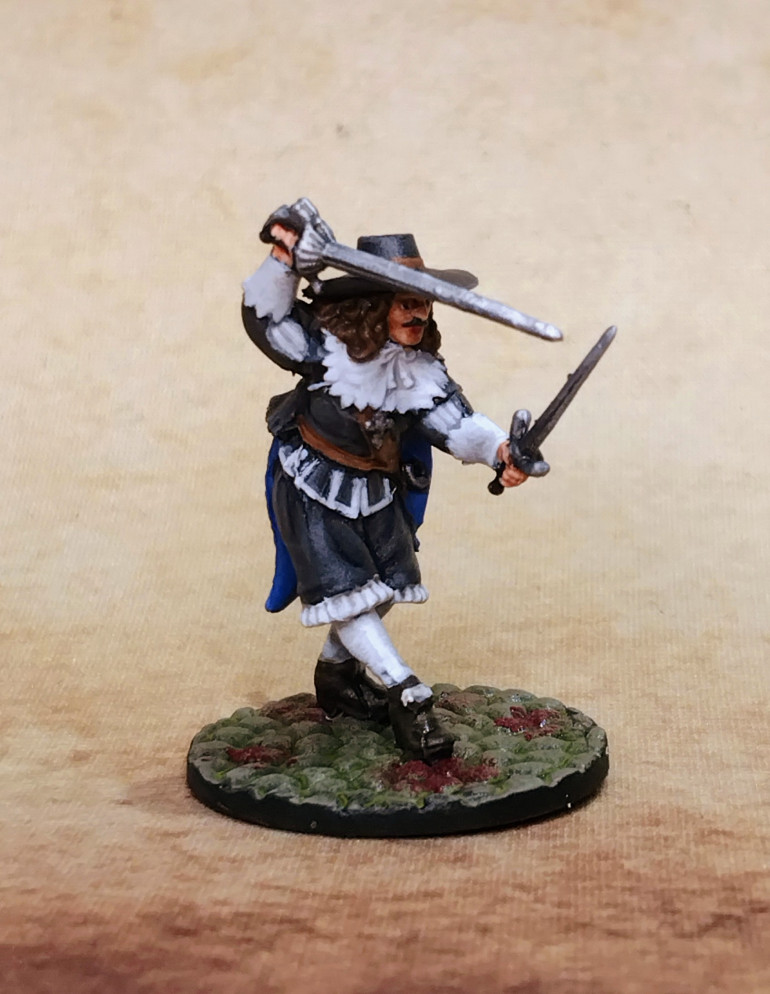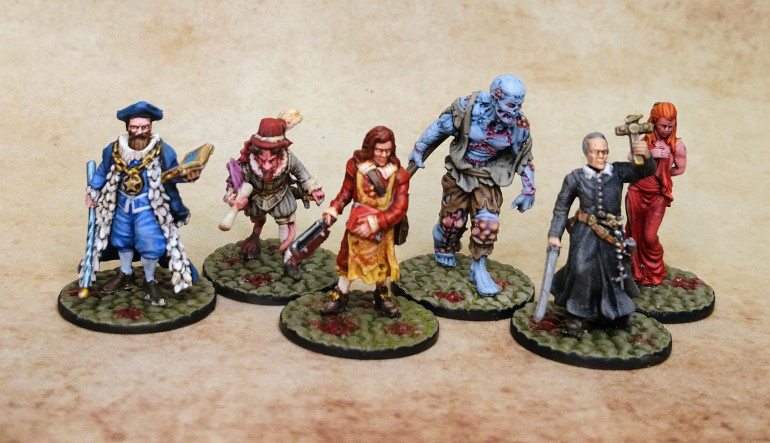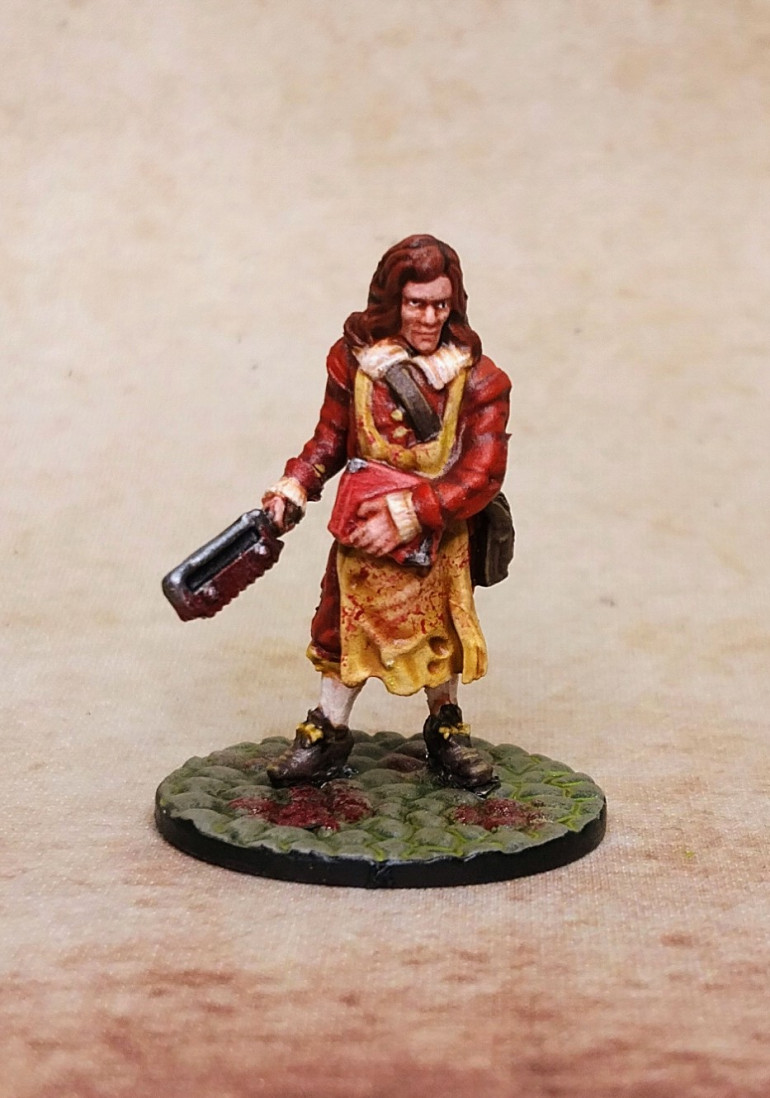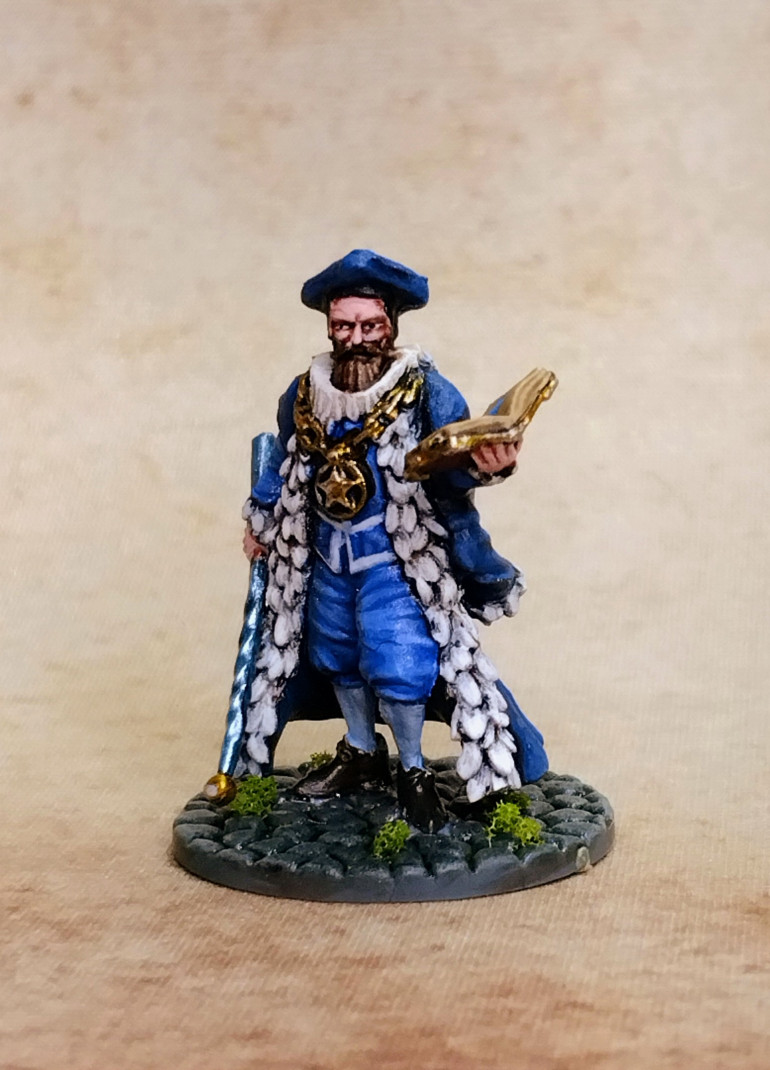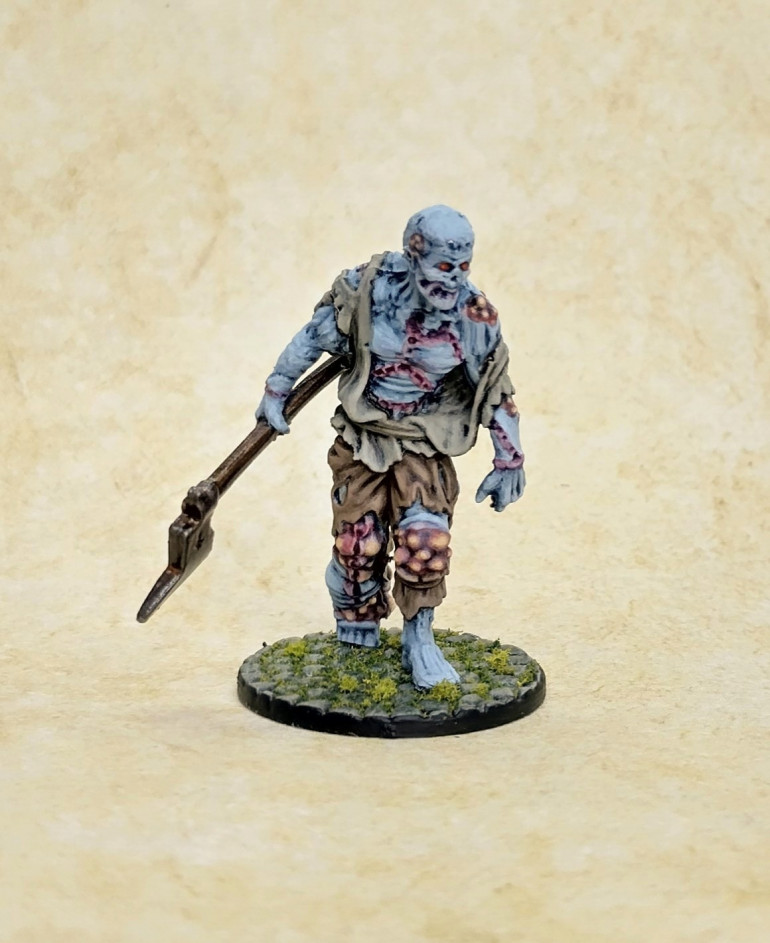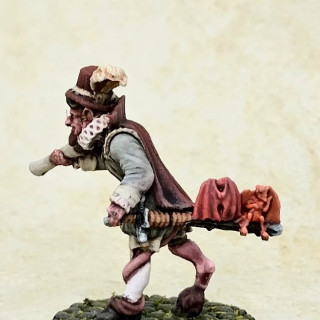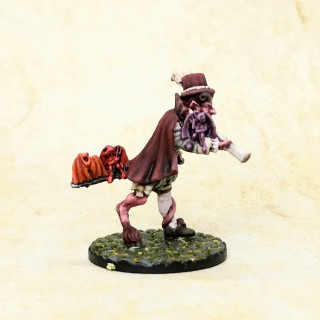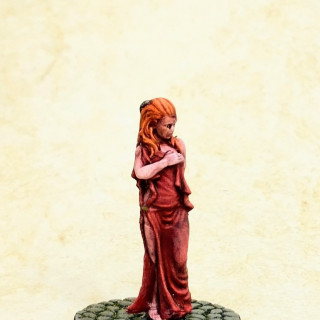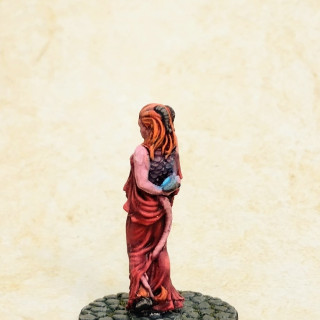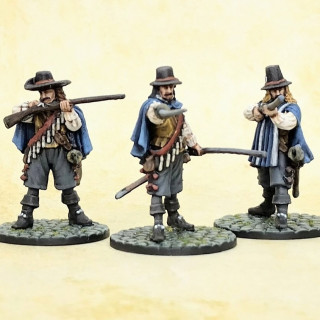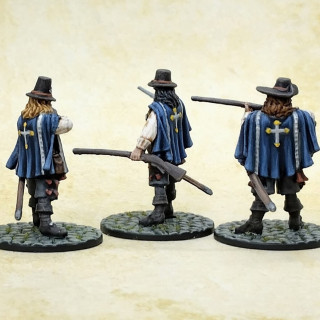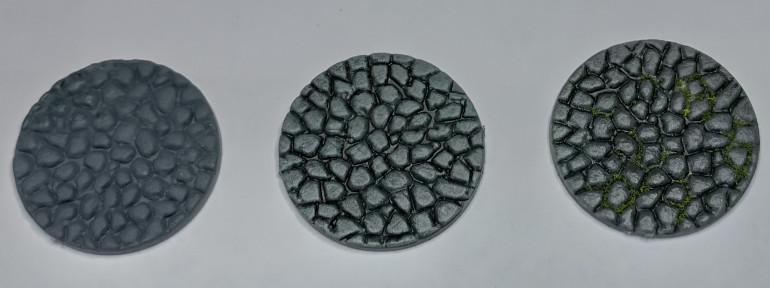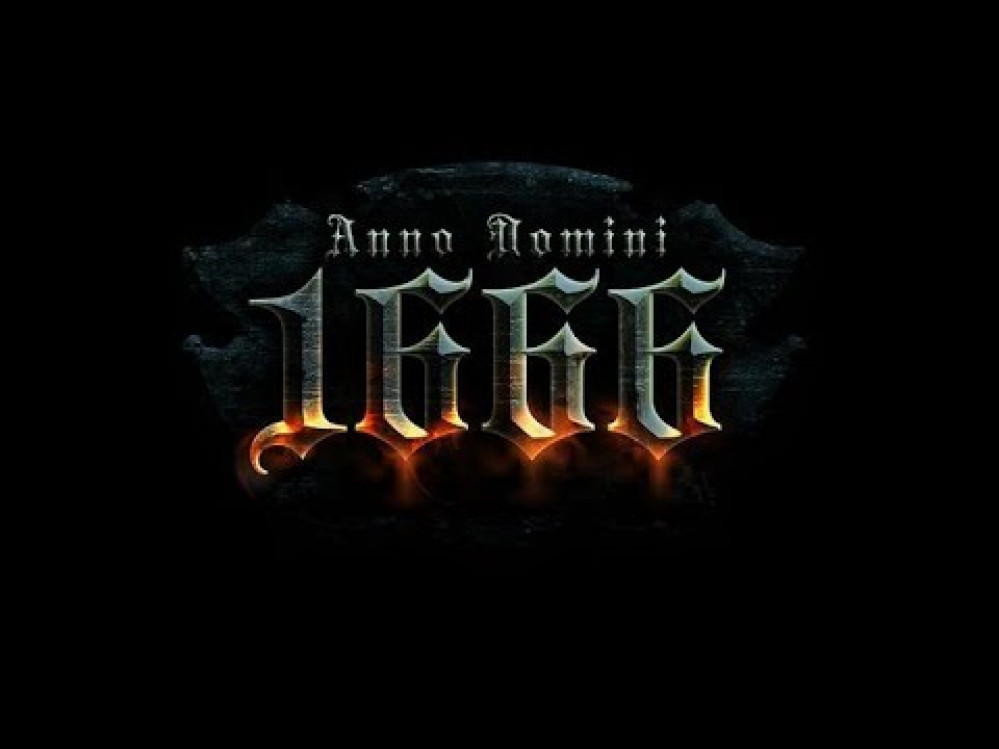
Anno Domini 1666 – The Old World without the Warhammer
Recommendations: 124
About the Project
Anno Domini is a miniatures boardgame set in Vienna in the year 1666 in an alternative time. The Habsburg emperor, Leopold I has died without an heir and the electors of the Empire are set to choose his successor. All of the major powers of Europe have sent delegations to try and influence that election to ensure that the candidate most beneficial to them is elected to the throne. Meanwhile, dark powers gather on Vienna as Satan himself sends his own agents to sow chaos with the goal of dragging Europe into another war and soaking the continent in blood
Related Game: Anno Domini: 1666
Related Company: Wargamer Company
Related Genre: Weird
This Project is Active
9. Aramis
Aramis, the priest. Aramis the lover. Aramis the Soldier. In the Alexander Dumas novels, Aramis is portrayed as a conflicted individual, never really satisfied with life. He flits from priest to soldier to priest. He courts pretty noble ladies, often his undoing but also in keeping with the opinions and attitudes of Jesuits of the time. Like the other two musketeers, he is is incredibly loyal to his friends above all else and the only time he is really seen to show remorse is over the death of Porthos (spoiler alert!).
The artwork from the game, on which this is based, shows aramis in a black and white outfit, which is somewhat reminiscent of the black uniforms of may jesuit priests. However it also has a flamboyance to it which matches his reputation as something of a lothario – a skill he also carries into the game.
To paint this, I used Necromancer Cloak from Army Painter (which has now been discontinued) mixed with a tiny bit of black paint to get a really nice dark grey and over that I just used Nuln Oil. This creates quite a muted look but I think it makes the material look quite heavy and rich, more like a wool than a silk.
8. The Chamber of Curiosities
And here it is, the complete set. The entirety of the Chamber of Curiosities. This, along with a couple of other sets are what really give Anno Domini its uniqueness, move it from an historical game and into a weird historical game. You can easily play AD1666 with purely the human factions, chronicling new adventures of heroes such as the Three Musketeers. But the game was always intended to have that horror element to it, a corrosive underworld in which Satan sends his agents to sow Chaos and Discord in the Habsburg empire with the aim of plunging Europe into war. Likewise, certain characters within the game exist solely to try and counter Satan and his schemes. This is one of 4 sets that help to bring such characters into the game, the others being
- Bloodmoon – a werewolf and two hunters
- Rabbi and Golem – what it says on the tin really
- The Horrors of Vienna – a Basilisk and a Lindwurm.
Chamber of Curiosities brings some new features to the game – magic and magical creatures. The game was obviously designed with magic in mind as the keywords and rules exist in the core rulebook, there just isn’t any means to cast spells unless you have access to certain characters and expansions.
In the photo below, the miniatures a shown in their “natural” pairings. We have Faust and his devil servant, Mephistopheles (left). We have Isaac Newton and his Monstrous creation, the Monstrum (centre). Finally we have Father Maximillian Merian, the exorcist, and the demonic Succubus (right).
I don’t know how much time I will have to paint over the coming months or when that time will be. My efforts will be focussed on finishing the King’s Musketeers. But for now I am happy that I have this set completed
7. Isaac Newton
Isaac Newton, for anyone who doesn’t know, was the man who invented gravity (or so I phrased it during my childhood). He was a polymath and unlike Faust, a real scientist – a mathematician, a physicist, an astronomer (as opposed to an astrologer like Faust) and a philosopher. His contribution to modern science really cannot be overstated. However in the world of Anno Domini we see a very different Isaac Newton, a man who has taken on a more Frenkenstein-esque role. Creator of the Monstrum, Newton is seen here in his butchers apron wielding his bone saw.
I love the colour palette on this one. Although I largely lifted it from the artwork in the game, I love the russet autumnal tones – the warm, orange ochre, the golds and browns. Although some of the details aren’t great, I was quite pleased with the facial details, relatively easy to paint. By no means as crisp as metal or resin but still good enough to show.
I also took a different approach to the basing. I wasn’t happy with the way the older ones had turned out. I wanted something a bit grimier and dirtier but also something faster to produce (gluing flock into recesses between the stones was a bit of faff). So I used the warm greys from army painter but I used a vibrant green, watered down, to flood the recesses and give a mossy, mouldy look to the stones. I then gave them a slightly “horror” vibe by splattering some dry blood effects (army painter) on them.
6. Johannes Faust
Johannes Faust was a German alchemist, astrologer and scientist from the German Renaissance. Oh, and magician. He was supposedly a magician. By the people of medieval europe he was often referred to a heretic and was rumoured to be a protestant. This colourful life gave rise to the folk legend of Faust, a man who made a deal with the Devil, who sent his servant Mephistopheles to serve Faust for 24 years in exchange for his soul. In the legend Faust is a successful scholar but is unsatisfied with his life and makes a deal with the devil under which he can experience all of life’s knowledge and pleasures. He uses the power given him by Mephistopheles to seduce a young woman named Gretchen who, upon giving birth to Faust’s illegitimate son drowns the child out of shame. She is tried and sentenced to death for murder, however she is saved by her innocence and is allowed to enter heaven. Faust, on the other hand has a different fate depending on who tells the story. The popular version has him being saved by God when the term of his pact with the Devil ends through the pleadings of Gretchen and is allowed into heaven. However in earlier tellings of the story, he is described as utterly corrupted and is carried off to hell by Satan. Whichever version you choose, the word “Faustian” came about to mean the sacrificing of ones values for personal gain. Faust is somewhat anachronistic in Anno Domini 1666, having been born in 1480. However the folk tale doesn’t really make any distinction as to time frame and, with this particular imagining of the man having actual magical powers, I think we can allow it as being based on the folk tale, not the historical figure.
After many, many months I can finally paint again. I had an ambition at the start of the year that I would paint the entirety of Anno Domini 1666. Then life happened. Work has absolutely exploded, I am currently try to undertake three roles at work (obviously, only getting one salary) and working away almost every week. I worked away 18 weeks straight between April and mid August, coming home Thursday night, leaving again early Monday or late Sunday every week. At weekends my daughter comes to stay with me and after she has gone home, it’s time to pack that suitcase for the week after. So there has been precious little time to paint. In March I also moved house meaning all my painting equipment was boxed up from February. And so now I am likely not even going to be able to paint a single faction of 7 miniatures before the end of the year, let alone the whole bloody lot.
But, as a little bit of a milestone, I only had two miniatures remaining from the Chamber of Curiosities set, which is one of the sets that really starts to give the game its weird history feel. I started painting Johannes Faust way back in July and I got him almost to the point of completion. I had a few hours painting on a Sunday afternoon but didn’t quite have the opportunity to complete him. But last week and this week I get to work from home and so I completed him at last! It was actually quite interesting painting Faust as blue isn’t a colour I often paint and have often found quite difficult, perhaps because of the sheer number of shades of blue out there compared to other colours like red. But I am quite pleased how this guy turned out (with the usual disclaimer that this is a PVC miniature and the detail isn’t very crisp)
5. Father Maximilian Merian
At the same time as painting Monstrum, I also painted Father Maximilian Merian. Maximilian is a Jesuit priest from Switzerland, born to the wealthy Merian family. Formerly a member of the Swiss Papal Guard, he has lately taken his holy orders and now spends his time hunting and exorcising demons. In the game, he is a mercenary, usable with any faction. However bringing him along for the ride pretty much precludes you from using anything even remotely supernatural as this is obviously incompatible with his puritanical beliefs.
He was painted as a side project while painting Monstrum during waiting for things to dry. Because his priest robes are mostly black, this is a fairly easy model to paint quickly using drybrushing. A black base coat, which can be applied using a spray primer, then drybrushed (using the techniques shown by Byron from Artis Opus) using a dark grey, in this case Necromancer Cloak from Army Painter. I then added a smidge if dungeon grey to the mix to lighten it and then gave it a slightly lighter drybrush before washing with nuln oil. The wash not only provides shade, taking he grey highlights back to just the right level, it also acts as glaze and gives you really nice smooth transitions from black to a mid grey. I was really happy with the finish, but sadly, you won’t get to see it. When I came to varnish it, the model misted over, pretty completely over the entire model. This is “repairable” without having to strip the model by painting it with a very thin coat of olive oil. However, even when left to dry, it has left the model with a slightly glossy finish which makes photos quite hard. So, yeah. Pretty hacked off about that.
4. Monstrum
After another bout of illness (yeah, it’s well past the point of being funny), I finally managed to sit down, on the very last weekend of the Black Jack Legacy July painting challenge, and finish the last of the “monsters” from Chmaber of Curiosities. This is “Monstrum”, essentially AD1666’s equivalent of Frankenstein’s Monster, only rather than being created by the evil genius of Dr Frankenstein, this one was create by the evil genius of Izaac Newton (yes, you read that right). Instead of pissing about watching apples falling out of trees, Newton appears to have turned his talents to more tangible endeavours.
There was absolutely loads of detail on this model, despite it also suffering in some areas from the same issues PVC miniatures suffer from. For the “stitching” across his torso and legs (basically, the areas where it looks like his skin is splitting), I tried a little experiment. I first painted some contrast paint across it, allowing it to spill into the areas around the gaps, after I based coated the skin. Then I painted the skin tone highlights over the top of the contrast paint. Because I am using speedpaint v1, the contrast reactivated and started to leech through the highlights which helped to blend the paints together and make it look inflamed
3. Mephistopheles
Mephistopheles is a Demon, summoned by Faust in the German folk story. For the price of his soul, Satan sent Mephistopheles to serve Faust using magical powers for a fixed number of years, at the end of which the Devil will claim Faust’s soul and he will spend eternity in Hell. There are different versions of the story with different endings, some good and some bad. I love how the miniature actually carries a scroll, like a contract.
Details wise, he wasn’t actually too bad, there were some very awkward mold lines, I didn’t manage to remove them all and I also had to do a few little repairs where more model was removed than I would have liked. A few areas that had problems were the hand gripping the sword, there seems to just be half of a couple of fingers missing. And the little imps that are sitting on his sword and his arm are really, really bad. There’s literally no facial detail.
But enough with the bad, apart from those things, broadly speaking the details were ok for a PVC miniature, especially the face and doublet. And it was surprisingly fun to paint, I don’t normally paint things in grey as it can be quite dull but I quite like the results. I also had fun with the skin because obviously Mephistopheles is a demon, one of Satan’s agents so I didn’t want him to look human. Likewise I didn’t want his skin to look bright red. I really like the pink skin tone. It’s close enough that from a distance it could pass as human possibly allowing him to operate a little more freely. Apart from the tail, obviously. And the horns. And the cloven hoof. Erm, yeah.
Anyway I think I enjoyed Painting because it’s a different colour palette than what I would normally use. And I like my little demon.
2. Succubus
Due to a painting challenge from the wonderful Blackjack Legacy YouTube challenge, I’ve interrupted the plan to paint a few of the more weird fantasy miniatures. Originally I was going to paint these near the end and work towards two playable factions (France and Poland), but the theme for the July painting challenge was Fantasy and I think these fit the bill better than the Musketeers. So I am working through the Chamber of Curiosities set which contains three monsters and three psuedo-historical characters. The monsters are a Succubus (painted here), a Frankenstein’s Monster type creature called Monstrum and the daemon Mephistopheles. The characters are a version of Isaac Newton, in this case responsible for creating Monstrum, Father Maximilian Merian, a Swiss priest turned exorcist and Monster Hunter on the hunt for the Succubus and Dr Faust, based on the German folk character of the same name who, after signing a pact with the devil was granted Mephistopheles as a servant. I think all of this counts as Fantasy, right?
I’m not going to drone on at Leng about how awful the miniature was – it was PVC and that’s usually just par for the course. That said, I am mostly happy with the results. I am a bit disappointed with the dress because although I think it looks ok, I had tried to paint it so it looked sheer and where the outline of her legs is showing under the dress, highlight it up using the skin tone. And it had worked right up until I put a red glaze over it and, well, the intensity of the glaze was too strong and it has hidden the effect. Also, as I was removing her from her original base the knife slipped and the feet and lower part of the dress ended up being cut off. I managed to repair it as best I could, but these things never seem to go back together properly. So if you look too closely, you will see the mismatch.
1. Royal Musketeers
The Royal Musketeers are one of two French factions available in the game, the other being the Cardinal’s Guard (and the Cardinal is even more than he seems that he was in the original novel, more on that in a later entry). Each faction is split into two troop types, personalities and commers, with 4 personalities available for each out of the box. There are additional personalities available, should you choose to buy them, all of which are drawn from some kind of literary, televisual or cinematic work (or in some cases both).
To get myself into the swing of things, I started with the commoners for the faction. These are, I should stress, fairly low quality PVC miniatures, for anyone wealthier than I looking to play this game, you can buy it with metal miniatures. Normally I would just slapchop or speedpaint my way through this sort of thing this time I decided to paint things the old fashioned way. There are only 7 miniatures per faction (I have purchased the extra commoners) and of those 7, only 3 are dungers. Because the economy of scale that I would get with speed painting isn’t there, the associated loss in quality that goes with speedpaint simply isn’t worth it (in my opinion, and right now that’s the only opinion that counts). But boy was it hard work. The details are so incredibly soft on these and because they come pre-assembled, you often find that certain parts are very hard to paint; the faces on the two that are brandishing their muskets for instance, are obscured by the musket itself – you can see the face but it’s very hard to paint the face.
That said, I am happy with how they turned out, and rebasing them onto the plastic cobblestone bases from Renedra has helped to lift them up a level. I also like some of the attention to detail on the sculpts, even if the details themselves aren’t quite up to scratch. The fact that the guns have a firing match on them rather than the a flintlock is nice to see as are the cartridges hanging from their bandoliers. And I love the guy who is holding the musket to his face (the one on the left) as if shielding the match from the wind whilst he blows on it to perhaps rekindle the flame. I remember watching the BBC’s Musketeers show and Aramis did the exact same thing when loading a musket and lining up his shot.
For the bases, I took the cobblestone bases from Renedra and sprayed them grey then gave them a dark brown wash. You can use any washes you like, I personally use citadel. I would, however, caution against using Army Painter washes because they have a glossy finish and which means you will have to add an additional step in near the end to give them a matt varnish (unless you’re happy with shiny bases in which case carry on). Then I drybrushed them up with increasingly light shades of grey. I used some of the brown-greys in the army painter range, castle grey, filthy cape and stone golem. The final step was a thinned green wash (I used Poxwalker for this) and I wiped the surface afterwards which cleaned most of the wash off the raised areas, leaving only a very thin coating, like a glaze but allowed it to still pool in the cracks and crevices between the stones. The final step was to use a very fine brush (like a 000) to apply some PVA glue into some of the crack onto which I then sprinkled green flock to create the impression of moss growing between the stones. This will technique will be used throughout this project, although I might vary the colours slightly between different factions
Introduction - The Old World without Warhammer...
My starting point in the whole wargaming hobby was via Heroquest and Warhammer. I always liked the Old World as a setting because I think its renaissance setting with black powder weapons offered something different and unique against a backdrop of medieval, Tolkien derivatives that were very prevalent in the early to mid 90’s. Its dark, gritty tone coupled with the creeping horror elements also made it a great setting for stories and roleplay games. I also grew out of the Fantasy genre of books and into historic fiction, starting with the Sharpe books by Bernard Cornwell. Since then I have read many different authors in numerous historical settings, but I always find myself drawn back to things set in worlds and times with that mixture of gunpowder and swords. All of this is as true today as it ever was. Needless to say, I was disappointed to say the least when Games Workshop decided to pull the plug on Warhammer Fantasy Battle, although by that time I think I was happy enough to just move on and play something else and buy my models elsewhere. This is probably why my miniatures and games collection today is so vast and diverse. It also explains why this game in particular caught my eye back in 2018.
Anno Domini is a miniatures boardgame set in Vienna in the year 1666 in an alternative timeline. In this history, the Habsburg emperor, Leopold I has died without an heir and the electors of the Empire are set to choose his successor. All of the major powers of Europe have sent delegations to try and influence the election to ensure that the candidate most beneficial to them is elected to the throne. Meanwhile, dark powers gather on Vienna as Satan himself sends his own agents to sow chaos with the goal of dragging Europe into another war and soaking the continent in blood.
So, black powder weapons and Swords? Check Magic and Monsters? Check A mixture of history and fiction? Check There was no way that this game wasn’t getting purchased! And now its time to start painting it.
Interestingly, at the same time as I am starting work on this, I am also starting work on the Assassin’s Creed Brotherhood of Venice game. Whilst that is set around 180 years prior to Anno Domini 1666, it’s another franchise that I absolutely love and for pretty much the same reasons. So please also keep an eye out for that and check it out as well.































![How To Paint Moonstone’s Nanny | Goblin King Games [7 Days Early Access]](https://images.beastsofwar.com/2024/12/3CU-Gobin-King-Games-Moonstone-Shades-Nanny-coverimage-225-127.jpg)









